|
|
| |
BULGARIA
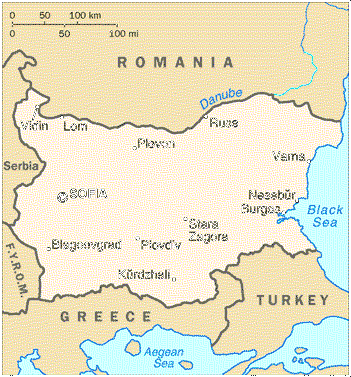 Bulgaria's natural landscape is full of surprises - it has endless, sandy beaches along the Black sea, wild mountain ranges and lush green hills, fertile plains, magnificent gorges, rivers, health spas and natural springs....It is famous for long balmy summers, dreamy scented rose fields, richly coloured orchards and sun-drenched vineyards...
PLACES TO VISIT:
UNESCO's World Heritage List
Monasteries and Churches
Cities and Towns
Black Sea Resorts
Mountain Resorts
UNESCO'S WORLD HERITAGE LIST
THE TRACIAN TOMB IN KAZANLUK
One of the most famous monuments of Thracian culture, included in the World Register of Historical Sites, in 1979, was discovered in 1944. A corridor, 1. 95 m in length, 1. 12 m in width and 2. 24 m in height leads to a domed tomb, 3. 25 m in height and 2. 65 m in diameter at the base. The building material is brick, used two centuries later by the Romans. The frame is of blocks of stone and clay is used as bonding material. It is situated in the southern part of a mound, at ground level. The entrance is from the south side. The tomb became world famous with its unique mural, done in wet fresco and tempera.
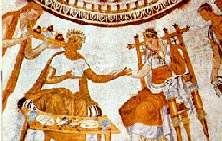 The artistic decoration covers an area of 40m2.It is an extraordinary art gallery, taking the visitor a long way back in time. The pictures show battles and scenes from daily life, realistically displayed, with great dynamism and details in the clothing and armour. The scenes of funeral procession , the musicians, the Thracian ruler and his wife, the chariots, the horses and other depictions are all very interesting. The tomb dates from the late IV c. - early III c. BC
Nearby an exact copy has been built for tourists.
THE TRACIAN TOMB IN SVESHTARI
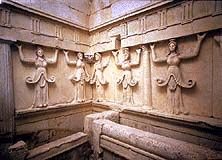
It dates back to the III c. BC and is included in the World Register of Historical Sites in 1985. It consists of three chambers - an entrance chamber and two antechambers. It is covered by a mound. The decoration of the burial chamber is exceptionally interesting, a unique blend of art and architecture. The stone architrave, around the walls, is supported by ten caryatids. The wall opposite the door is painted in navy blue crayon and depicts the heroicisation of the deceased.
THE HORSEMAN OF MADARA
A relief portraying a life size horseman, followed by a dog is carved on a cliff, about 100 m high. The relief covers an area of 23 m2 . A dying lion is pictured at the feet of the horse.
Greek inscriptions around the figure tell of Bulgarian rulers and important events.
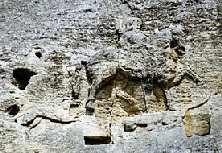 This is a rare monument, dating from the VIII - IX c. A. D. It is a unique symbol of young Bulgaria. The scene has been depicted realistically and without any unnecessary details. The work displays early Bulgarian medieval art. It was included in the World Register of Historical Sites in 1979.
THE BOYANA CHURCH IN SOFIA
It is one of the most important and valuable antiquities of exceptional historical and artistic significance. It is situated at the foot of the mountain of Vitosha. The oldest part of the church dates back to the early XI c. According to an original manuscript, in 1295 the two - storey part of the church was built and the rest was added in the middle of the XIX c.
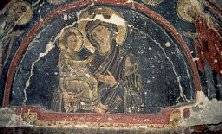 The most interesting part of the monument are the murals done in 1259. The frescoes are rich in tone. The artist skilfully combines the requirements of iconagraphical canons with real life. 89 scenes are depicted, containing 240 human images - a real art gallery of the XIII c. The portraits of the founder of the church - patron Kaloian and his wife Desislava and of prince Konstantin and his wife Irina are the supreme peak of the skill of the artist. The monument was included in the World Register of Historical and Natural Sites in 1979.
THE ROCK MONASTERIES OF IVANOVO
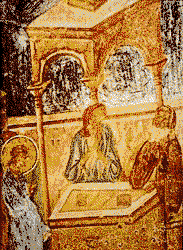 Located on almost a cosmic landscape - rock massifs, enveloping the picturesque river valley near the city of Rousse. As if striving to be closer to God, hermit monks settled here during the 11th - 14th century, digging cells, churches and chapels into the rocks. Talented artists painted them with realistic frescos, exquisite in colour and composition, and turned them into a treasure trove of Bulgarian mediaeval painting.
THE RILA MONASTERY
"Of all the Bulgarian glory when there were so many large monasteries and churches in Bulgaria earlier, the Lord has left only Rila Monastery to exist in our times... It is of great use to all Bulgarians. Therefore, it is the duty of all Bulgarians to guard it, and to give alms to the sacred Rila Monastery...".
Paisii of Hilendar, Slav-Bulgarian History (1762)
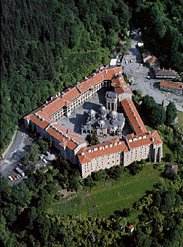
The chronicle of this monastery reflects the entire history of the Bulgarian State and the Bulgarian people, the defence of their spiritual and cultural nature.
In 1983 Rila Monastery was included in the UNESCO List of World Heritage. It was founded in X c. by followers of the Bulgarian hermit saint Ivan Rilski. The monastery is one of the most significant cultural centres in Bulgaria, where through the centuries intensive spiritual, educational and creative activities flourished. It was in close contact with spiritual centres abroad. After a devastating fire, the monastery was completely rebuilt in the XIX c. It is the biggest renaissance monument in Bulgaria. It is an architectural - artistic composition of enormous dimensions, an apogee of the work of the renaissance craftsmen, icon - painters, wood-carved, artisans in the artistic area where architecture and the decorative and monumental painting of stone, wood and metal are combined. The defensive tower of Khrelio, built in the XIV c., can be found in the yard. The Monastery is still in use. There is a sumptuous library, a historical museum and a few thematical museum exhibition. The church was painted by the most famous representatives of the Bulgarian renaissance artistic school.
THE OLD NESSEBUR
The most picturesque town of the Bulgarian Black Sea Coast. A narrow winding promontory connects the ancient town with the mainland. Today the visitor can see over 40 churches in an area of half a square kilometre.
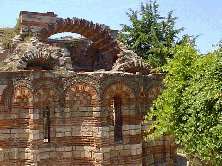 The town is still entered through the ancient fortress gate. Remains of ancient public buildings, early Christian basilicas, mediaeval churches and picturesque housing ensembles from the 18 Th and 19 Th centuries can be seen at every step.
The ancient town of Nessebur was included in the List of World Heritage in 1983.
THE NATURE RESERVE "SREBARNA"
"Sreburna" was included in the list of the biospheric nature reserves under the aegis of UNESCO in 1977 and in 1983 it was included in the World Register of Natural Heritage. It is situated in Northern Bulgaria, at the delta of the river Danube. It is a lake, 1.5 m deep, fed by water from the river and Karst water. The temperature of the water during winter is 0°C, and in the summer up to - 28°C.
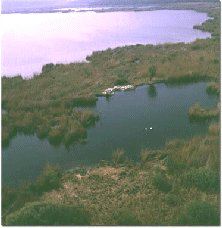 The natural habitat favours the growth of a wide variety of animal and plant species. Of great interest are the 160 species of birds, 90 of which nest and breed here. "Sreburna" is a stopping place for many migratory birds. It possesses one of the 4 known colonies of the curly-headed pelican in Europe. There is also a considerable colony of herons and other rare water birds. There are many species of mammals, river animals, different plants. The reserve covers an area of 8000 decares. In the vicinity there is a Nature museum and an Ecological research station.
PIRIN MOUNTAIN
The main ridge of the mountain is aligned from Northwest to South-Southeast. It is about 80 km long and 40 km wide. It covers an area of 2585 km2 of exceptional natural beauty - high peaks, many glacial massifs, 176 lakes. About 90% of these lakes are more than 2100m above sea level. 119 of them were created by glaciers. The most famous of these are: the "Popovo" lake, "Kremenskite" lakes, "Valiavihkite" lakes, "Vlahinskite" lakes, "Bunderishkite" lakes, "Vasilashkite" lakes.
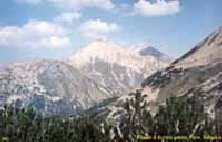 The sharply contoured landscape and the blend of Central European and Mediterranean climates ensure a wide variety of flora and fauna. In 1962 part of the mountain was proclaimed as a national park, initially named "Vihren" and later on renamed "Pirin". Noting the uniqueness of the park and its global significance, UNESCO included it in the World Register of Natural Heritage.
The park covers an area of 26479.8 hectares and is the largest in the country. It includes parts of the mountain which are above 1000m above sea level with unique ecosystems, areas with specific geomorphology, a large number of Bulgarian and Balkan indemnities and relicts. There are a few trees declared to be natural heritage, including the "Baikusheva" white fir, more than 1200 years old, 16m high and with a circumference of 5.70m. The park also contains 70 glacial lakes, many caves, waterfalls, majestic abysses and cliffs. The areas of natural beauty include the Bunderishki caves, Kasana, Kioshkata, the rock formation Pirostiata, the Demianishki Skok and Iulenski Skok waterfalls, the natural reserve "Baiuvi dupki - Jinjiritsa" etc.
The mountain is almost impassable. Roads have been made from Bansko, Sandanski, Gotse Delchev etc.
MONASTERIES AND CHURCHES
The Bulgarian monasteries keep a rich culture and alert national spirit throughout the centuries.
The bigger monasteries in Bulgaria are: the Rila, Bachkovo, Troyan, Preobrazhenie /Transfiguration/, Kilifarevo, Kapinovo, Cherepish, Rozhen, Ivanovo, Plachkovo, Aladja, Zemen, Dryanovo, Sokoloski, Glozhene, Kremikovtsi, Dragalevtsi, Gorni Voden, Kuklen, Arapovo, Batoshevo, Lopushanski, Maglizh, Etropole, “St. St. Kirik and Iolita”, Shipka monastery with a memorial Church.
Founded in the 10th century by the Bulgarian monk St. John of Rila, the RILA MONASTERY stood abandoned for a short time in the 15th century when Bulgaria fell to the Ottoman Turks. Later that same century it came to life again and was later restored in the 19th century. Listed as a World Monument of Culture, it houses an interesting museum and offers overnight accommodation.
The peace and tranquillity of the somewhat smaller
BACHKOVO MONASTERY
built in 1083 immediately envelops the visitor. From ancient times it was used as an ossuary and both its architecture and wall paintings are exquisite. The winter church of the Archangels has been dated as 12th century, and Tsar Ivan Alexander added new buildings during his reign in the 14th century. Laid waste by the Turks in the 16th century, it was restored in the late 16th century. There is lot to see and admire here, especially the refectory and the domed kitchen, the church of the Assumption and its murals, and the domed church of St. Nicholas.
Legend has it that the foundation of the present PREOBRAZHENIE MONASTERY dates back to the reign of Tsar Ivan Alexander. There are remains still to be seen south of its present site. Falling victim to the excesses of the Ottoman Empire, it stood abandoned until 1825 when hieromonk Zossim from the Rila monastery began restoring it. The main church, the residential wings and the church of the Assumption were all finished within 30 years of the start of the works.
Little is known about the TROYAN MONASTERY before the 15th century, but it certainly must have had a colourful history. It was in the 19th century that the monastic brotherhood restored the monastery, building a beautiful church, spacious residential wings and a tower with belfry.
The DRYANOVO MONASTERY OF ST ARCHANGEL MICHAEL was founded in the 12th century, but was destroyed and rebuilt several times during the Ottoman Empire. The monastery has stood for 150 years on its present site. It contains an ossuary in memory of the fallen insurgents. The monastery also has an interesting historical and geological muse-um, including Neolithic remains found in a nearby cave.
SOKOLOVO MONASTERY is in Bulgarian terms the younger brother, since it was first founded in 1832, thanks to donations from nearby villages of Etura and Nova Mahala. The guestroom has an impressive gateway dating back to 1836. Although the eastern wing was burnt down, it was later restored in 1981.
STS KYRIK AND YULITA MONASTERY is said to be dated pre-14th century, although the earliest surviving stonework is the fountain dating back to 1696. Repeatedly set on fire by the Ottoman Turks, it was restored to its present day state after 1835. It boasts wonderful examples of icons and church furniture, and has an impressive collection of silver and copper ware.
East-Orthodox churches have a historic significance for the development of the Bulgarian spirituality and for preserving the Bulgarian national identity. Temples to other religions – Catholic, Protestant, Judaism, and Islam co-exist in close neighbourhood for more than a century.
The “Alexander Nevski” memorial Church is the biggest on in the Balkan Peninsula. It is downtown Sofia close to the Sofia University and the “St. St. Cyril and Methodius” National Library. It was built in the beginning of 20 c. by the prominent Russian architect Pomerantsev in memoriam to those killed in the Russo-Turkish war of 1878.
The “St. Nedelya” Church is in the city’s ideal centre on the “St. Nedelya” square, dividing the main city traffic artery of two streets: the “Vitosha blvd. And the “Knyaginya Maria Louisa” blvd. Built in the period 1856-1863 onto relics from the ancient Roman town of Serdica; destroyed almost completely in a political coup in 1925 and later fully restored.
The “St. George” Rotunda – this Church is the oldest building in Sofia. It stands behind the “Sheraton”, Sofia hotel amidst the ruins of the ancient town of Serdica. Discovered in it have been two layers of frescos, the oldest dated from the 10 c. AD. At present the Church is a museum, open from Tuesday through Saturday: 10.30 a.m. – 1.00 p.m. and 3.00 – 5.30 p.m.
“St. Sophia” – this is the oldest East-Orthodox Church in Sofia. Built by Byzantine Emperor Justinian in the period 527 – 565 AD, the Church gave the name of the city as early as in the 14 c. During the Ottoman rule it was turned into a mosque. After a devastating earthquake in 19 c. it was abandoned and only in 1900 it was restored in full.
CITIES AND TOWNS
SOFIA
“ Ever growing, never ageing"- this is the motto inscribed on the coat-of-arms of the Bulgarian capital – the city of Sofia.
Late last century Sofia totalled only 12,000 residents. In 1946 – 516,000 residents, and today - some 1,200,000 residents, i.e. 14 % of the country’s population. Drawing a balance, one sees that in the past 100 years the population multiplied 100 times.
This is one of the oldest towns not only in Bulgaria but also throughout Europe. “Sofia” is the fifth name of the town – following Serdica, Ulpia Serdica, Sredetz, and Triaditza. There are data on Serdica’s existence of 5,000 years ago, and the earliest written data for residents on the lands of Serdica date back to the middle of the first millennium BC. The history of today’s city of Sofia started with the founding of the Thracian town of Sardonopolis. “Serdica” (the emphasis being on the last syllable) is the oldest name of the town we know. The name originates from “Serdi” – one of the 22 Thracian tribes forming the numerous Thracian people.
Located in the fertile Sofia valley, in the very centre of the Balkan Peninsula, on the strategic crossroads between East and West, the town was a much-attractive centre for many tribes and nations, travellers and conquerors. This was why it repeatedly experienced periods of upheaval and decay, but always managed to revive anew from the ashes – like the Phoenix bird, even more magnificent and powerful.
Here people venerated especially strongly god Asclepius (or Aesculapius) since on the territory of Serdica there were numerous warm mineral water sources, called Thermi.
Serdica reached its peak under Emperor Constantine the Great (306 – 337 AD).
In 6 and 7 centuries Slavonic tribes started settling in the Balkans and in the Sofia plain.
In 809 AD khan Krum besieged and overtook Serdica. Ever since the town linked its fate for good with the Bulgarian state.
In late 9 c. – under the reign of tsar Boris the town assumed the Slavonic name of Sredetz – meaning “in the middle” of the Balkan Peninsula.
In 1194 AD the town of Sredetz joined the confines of the Second Bulgarian kingdom. There followed a period of long-lasting peace and upheaval of the material and spiritual culture. In Medieval Sredetz a literary school was set up with the “St. Sophia” Church, while in 1259 AD the greatest work of the Bulgarian Middle Ages came to life – the Boyana Church murals.
At the end of 14 c. AD the town of Sredetz assumed the name Sofia. This name was linked with the biggest for that time and most beautiful “St. Sophia” Church, The name is first mentioned in a charter by Tsar Ivan Shishman (1371 – 1393 AD).
During the Ottoman rule the town was the capital of the Rumelian beyler-bey office, encompassing almost all the territory of the Balkan Peninsula. Preserved from that age now are the “St. Petka Samardjiiska” Church (in the subway in front of TSUM, the “Sheraton” hotel”) and the “St. Spas” (Ascension) Church (within the architectural ensemble of “Bulbank”).
An important fact of Sofia’s history was its proclamation for capital of Bulgaria after the liberation from Ottoman domination (on a proposal by the prominent public figure Marin Drinov) with a Decree by the first Bulgarian prince Alexander Battenberg on April 3, 1879.
PLOVDIV
Lucina the Greek called Plovdiv "the biggest and most beautiful of all
towns" in
Thrace. With a population of 400.000 it is Bulgaria's second largest city. The old town embodies Plovdiv's long and varied history - The Thracian fortifications used by Macedonian masons and overlaid with Byzantine walls and great timber-framed mansions erected during the Bulgarian Renaissance look down on the Ottoman mosques and artisan's homes of the lower town.
There are still remains to be seen today of Plovdiv's historical position as a crossroads between East and West, among them the city Forum, the amphitheatre of Philip II of Macedonia, basilicas, thermae, merchants' houses and administrative buildings. With the restoration of the 2nd century theatre, performances are again given in this 3.000 seater monument of history.
Plovdiv's showcases are the dozens of National Revival style houses, which are an excellent example of this style at the time at its height. They were built on an incline, expanding storey by storey using timber-framed oriels, thus cleverly solving the problem of available ground and the merchants' demand for roomy interiors in the 19th century.
VELIKO TURNOVO
The royal city of Veliko Tarnovo, once capital of the Second Bulgarian Empire, is situated on three hills encircled by the Yantra river which cuts into the countryside. The sheer cliffs are home to houses, perched one on top of another, right down to the river's bank.
The main hill, Tsarevets, was a natural inaccessible fortress on which the royal palace, the patriarchate and the many domed churches were built. At night, the floodlit ramparts and the Patriarchate, and what remains of the palace and churches, convey something of the grandeur of the city once renowned as being "second only to Constantinople".
To the south east of Tsarevets stands the restored Baldwin Tower, built to commemorate
the Bulgarian Tsar Kaloyan's victory over the knights of the Fourth crusade in 1205.
To the west on the Yantra lies the Assenova quarter, once an artisan quarter during the Middle Ages, nestling beneath the imposing Trapesitza massif. Here the bolyari and leading clergy of the Second Empire built their mansions and private churches, and today many are suc-cessfully excavated.
On the south bank of the Yantra stands Sveta Gora. This was once the country's spiritual and cultural centre. The Turnovo school of literature and painting gave the world the Manassieva Chronicle and the Tetraevangelis of Tsar Ivan Alexander, while its traditions played an influential role in south western Europe.
Besides being a medieval capital. Turnovo was also a National Revival city where some of the finest work of Kolyo Ficheto, the master builder, is to be seen, and where the 18- 19th century houses seem to grow right out of the steep slopes flanking the river, The many churches still standing and in use, such as St. 40 Martyrs, Sts. Peter and Pavel and the church of the Holy Virgin. are a splendid example of Bulgaria's architecture.
THE VILLAGE OF ARBANASSI
Arbanassi is one of Bulgaria's most picturesque villages. It lies hidden on a plateau 4 kilometres north east of Turnovo and some of the many monasteries built during the Second Empire still stand today. It is thanks to the merchants Investments here that the village has so much to offer, with its large stone-built houses, notably the Konstantsaliev house, and churches, chapels and fountains with drinking water. It quite naturally became a lively urban centre for Christians, hidden from the eyes of the Turkish ruled Turnovo.
TRYAVNA
Although Tryavna is an old crafts' centre with no less than 140 listed buildings, it is not however a typical museum town, since its position on the mountain slopes has ensured its unspoiled beauty. The whole town exudes
an air of the National Revival period. Wandering through the narrow streets one cannot help but notice the richly designed woodcarvings, which abound both inside and outside the houses.
Besides the interesting exhibitions to be seen in the homes of National Revival figures such as Angel Kanchev, Petko and Pencho Slaveykov, is the Daskalov's House built in 1804, which has been turned into an ethnographic muse-um. The distinctive style of the 19th century Tryavna school can be viewed in the Museum of Icon Painting and Woodcarving.
BOZHENTZI
Lying between Gabrovo and Tryavna, Bozhentzi boasts superb examples of 19th century dwellings. During the latter part of that century it prospered thanks to its smiths. potters and weavers and the local merchants who traded as far afield as Russia and Hungary. Today it is better known among the artistic circles as a holiday retreat.
The village now has well over 100 listed buildings., ranging from the grandeur of a wool merchant's house to the humble dwelling of a rural peasant of that time. and also today's artisan workshops. In this tranquil atmosphere it seems as if time has stood still these past two centuries, with nothing but fresh mountain air and quaint white-washed houses covered in seasonal flowers and roofed with heavy stone tiles.
KOTEL
The town of Kotel lies in a small valley in the Balkan range which links north and south Bulgaria. Renowned for its spirit of the National Revival, it is famous as a centre for carpet-making, and a wide selection of antique and modern carpets and tapestry icons in the spirit of medieval frescos are on exhibit in the village.
Here the National Revival houses were built of wood, something more particular to the Eastern Balkans, the only difference being that they are higher, up to 3 or 4 storeys high. Besides an ethnographic museum, there are some beautifully preserved houses, including the Kosichkov, Pisomov, Burnev, Bairumov and Karaivanov houses, the old water mill and an inn.
ZHERAVNA
The village of Zheravna is set on the beautiful southern slopes of two small hills in the Eastern Balkan range. The spacious wooden houses, surrounded by stone walls with nail-studded doors as entrances, date from as early as the 17th century, when sheep breeding and various crafts were the main activities. There are fine examples of woodcarving to be seen here, notably in the Sava Yovkov House. Many of Bulgaria's artists' houses are open to the public, including that of Yordan Yovkov the novelist and Rusi Chorbadzhi. While the older houses were entirely wood built, later houses had their ground floors built of stone.
The houses' interiors are awash with colour and artisan work, and mirror the pride felt by Bulgarians for their homes and the special place they have in their lives.
KOPRIVSHTITSA
Koprivshtitza is one of Bulgaria's best preserved towns and its typical 19th century atmosphere along with its natural surroundings make it a must on every visitor's list. While the romantic atmosphere of previous centuries lingers on, it is interesting to note that the first shot fired during the 1878 April uprising against the Ottoman Empire was fired here. Eminent political and social figures lived in this town where the evolution of Bulgaria's National Revival architecture is apparent wherever you look. The town is perhaps best known for its Great Koprivshtitza Folklore Festival, held every five years.
MELNIK
In the Southwest of the Pirin Mountain stand the Melnik Pyramids - sheer, strangely shaped sand and limestone rocks. And here amongst this breathtaking scenery you will find Melnik, one of Bulgaria's smallest towns. Hidden by a seemingly impenetrable mountain wall, the village was able to withstand the effects of the Byzantine Empire in the 11th century. And yet once there, you find yourself in an attractive main square with taverns and timber propped whitewashed stone houses leading off to cobbled streets and courtyards where flowers and vines adorn the facades. In the 17th and 18th centuries Melnik flourished as a tobacco and wine growing community, whose strong red wine was drunk as far afield as France, Spain, Italy and Austria.
BANSKO
One of the prettiest Pirin mountain towns, Bansko is situated at the foot of the Pirin Mountain and right below the Pirin National Park, a world national heritage site, although in recent years Bansko has also become known as a winter sports resort. Here the old lives hand in hand with the new, where the modern centre gives off onto small cobbled streets with timber framed houses sheltering behind stout double doors. Bansko's architectural heritage is best seen in master builder, woodcarver and painter Velin Ognyanov's work. He rebuilt the Sirleshtova House in the late 18th century and the Velyanova House around the turn of the 19th century.
BLACK SEA RESORTS
VARNA
Apart from being a beach resort, Varna rivals the great cities of Sofia and Plovdiv, in its offering of cultural attractions and historical buildings, museums and art galleries. It also provides access to some of the quieter scenic spots along the coast, including the nature reserve of Kamchiya, the royal palace of Balchik and the hill-side monastery of Aladzha.
Varna was an important port and trading centre from ancient times - attracting a truly cosmopolitan population of merchants where influence is still to be found today.
At the seafront you will be greeted by the colourful flowerbeds of Primorski Park, modelled allegedly on the Viennese Baroque palace gardens of Schonbrunn and Belvedere. The impressive park also houses various museums including one on Natural History, a Planetarium, zoo and aquarium. If you are lucky you might even catch a glimpse of a pair of dancing bears!
Varna is an 'around-the-year' holiday destination. Beyond the High Season its balneotherapy facilities can help you unwind and enjoy the many sights and sounds in peace.
THE KAMCHIYA NATURE RESERVE
South of Lake Varna lies the impressive nature reserve of the River Kamchiya. From the small resort (including a campsite) nestling in the woodland, you can enjoy a tranquil boat trip to take in the natural vegetation and catch a glimpse of the local bird life - pelicans, kingfishers and waterfowl share quarters with shoals of carp and pike.
NESSEBUR
Nessebur lies nestling along a romantic isthmus. Its cobblestone streets, well--kept Medieval churches and timbered houses from the 19th century lend the place its particular charm. In fact, due to its chequered past Nessebur's churches can be best described as a cross between Slav and Greek orthodox architecture - some of the finest in the area. You can stroll for hours through its streets, looking at the wide choice of local street wares on offer or else head for the shade of the many churches and museums to capture some-thing of Nessebur's rich and exotic past.
Nessebur has a good selection of private accommodation, very often in grand old houses from the previous century.
You will never run out of places to eat and drink in Nessebur - it has a wide choice of restaurants, taverns and cafes.
SOZOPOL - the City of Salvation
Further south, lying on the Gulf of Bourgas, you can find the resorts of Sozopol, one of Ancient Greece's oldest settlements formerly known as 'Apollonia Pontica' named after Apollo, the patron of seafarers. Today it resembles a cluster of welcoming turn-of-the century houses dotted along the rocky headland, interspersed with small garden shrines. Somewhat quieter than Nessebur, the resort also provides the tourist with two fine, sandy beaches, set off nicely against the tranquil charm of fishing life. One lies within a sheltered bay with the second, larger beach extending southwards beyond the headland. Sozopol is traversed by beautiful narrow lanes, old houses and its romantic charm has attracted artists and writers throughout the centuries.
Accommodation in Sozopol consists of a small guesthouse-inn, a former naval club, or either private rooms in old houses on the peninsula or else larger chalet-style dwellings in the new town. Nearby, the port of Bourgas is well worth a visit. In addition to an international airport, this important commercial coastal town has an attractive centre with lively terraces and plentiful cafes, offering tourists a warm welcome. The presence of visiting ships and passing tourists lends Bourgas a certain cosmopolitan air, especially during its folk festival, held in late August.
ALBENA
Albena is a modern resort of outstanding natural beauty where the emphasis is on environment-friendly. The resort offers clean beaches, sea and atmosphere.
It lies in a unique natural set-ting - you can enjoy a romantic boat trip along the nearby Batova River or take a stroll in the Baltata forest, rich in flora and fauna.
Like its neighbours, Albena's climate is a good reason in itself for spending your holiday here - with an air temperature of between 230C-280C in the Summer and an average sea temperature of 250C, what further encouragement do you need?!
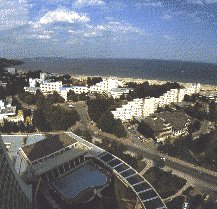 As one of Bulgaria's newer resorts, Albena caters for the young and stylish. If you are into active leisure-time pursuits then you will find its sports facilities to be among the best in the Black Sea area. And if you are feeling particularly intrepid, its new sports centre offers paragliding and sky-diving. If you want to unwind then Albena offers a wide choice of balneotherapy cures.
Albena has a wide range of accommodation to suit all tastes and budgets from -4-star hotels and bungalows, to camping in traditional wooden chalets. Its restaurants tend to be small and intimate, offering good, honest cuisine and excellent locally-caught seafood. And if you want to experience local folklore there's ample opportunity in Albena and the surrounding area.
ZIATNI PIASACI
As its name implies, this beach of fine, golden sand is 3.5 kilometres long and, in certain places, 100 metres wide. Here you can while away the hours in guaranteed sun-shine from May through to October. Summers are long and warm - with average temperatures of up to 270C in the High Season, tempered by a mild, refreshing sea breeze. The water, too, is a pleas-ant 240C during the July-August period.
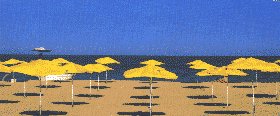 The resort offers plenty of opportunity to discover the local folk-lore - local food and drink accompanied by traditional song and dance, haunting melodies, colourful costumes, live entertainment to suit all tastes and unforgettable customs (such as fire dancing - barefoot across burning coals).
Golden Sands is an ideal resort for all ages - whether you're single, in a couple, married with children, retired or travelling in a group... there is something for everyone. There is a good selection of comfortable hotels, small guesthouses and private accommodation.
If you are after an active holiday the resort is perfect for windsurfing, paragliding, water-skiing, sailing and all manner of both indoor and outdoor sports. There are numerous swimming pools, tennis courts, bridle ways, cycle paths, a bowling alley, facilities for table tennis, volley- and basketball... and plenty of fun for the kids. There's even a cinema, open-air theatre and casino... and a children's crčche to give mum and dad a welcome rest! Golden Sands is also rich in mineral springs and health and fitness facilities.
The quality of the seawater, sand and air is monitored monthly to ensure that your stay here will benefit from the high standards. Golden Sands is, in fact, located in a beautiful National Park - Zlatni Piasaci - where environment--friendly is the understatement. Here you can catch a ride in a solar-energy powered taxi or miniature train or do your bit for the environment by taking a rickshaw or hiring a bike!
STS. CONSTANTINE & HELENA
The resort of Sts. Constantine and Helena, lying between the resorts of Golden Sands, to the North, and Varna, to the South offers an elegant holiday destination, which prides itself on a long tradition of hospitality and service with a smile. 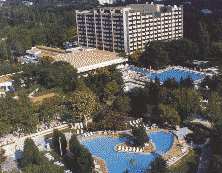 Its natural springs and healing mineral water provide the key to its popular balneotherapy centre. Between lush parkland and luxurious quiet bays lie the Grand Hotel, renowned inter alia for its excellent sporting facilities, and the Sunny Day holiday complex, offering a wide range of facilities for young and old.
RIVIERA
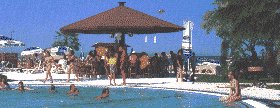 17 km away from Varna, the luxury Riviera hotel complex lies within a beautiful park with majestic old trees, over 100 years' old. There is a wide choice of hotels, restaurants (including one specialising in local fish dishes), a night club, disco, swimming pools, sauna, balneotherapy and fitness centre...
RUSALKA
THE BAY OF BIRDS, TAOUK LIMAN
This new holiday village, comprising a modern villa complex, offers a quieter alternative to some of the Black Sea's larger resorts. Apart from the usual bars, restaurants and sporting facilities, Rusalka is also home to an open-air cinema and caters especially for families with small children. Rusalka provides a good base for excursions to the picturesque caves and rocks of Kamen Bryag to the North and to the inland town of Shabla, further south, home to herons, ibises and grebes and the ShablaTuzla Lake.
SUNNY BEACH
(SLANTCHEV BRYAG)
This is one of the largest family resorts on the Black Sea. Its clean sandy beach -8stretching over S kilometres - interspersed by natural sand dunes, has over a hundred hotels, three campsites, numerous villas and private rooms and over 130 restaurants to choose from!
Whether you have come here to relax and unwind, take a sporting break or go night-clubbing and dancing - there is some-thing for everyone. You will be spoilt for choice.
ELENITE
The Elenite Holiday Village, lying just North of Sunny Beach, offers stylish villa accommodation overlooking a beautiful stretch of clean sandy beach - complete with bar, disco, tennis courts, shopping facilities, restaurants and bike hire facilities to tour the surrounding area.
DYUNI
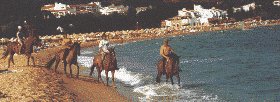 A recent tourist development, the large protected bay of the Dyuni Holiday Village is a perfect setting for self-catering holidays. Stylish buildings, some of which imitate the traditional local style of timbered houses, make Dyuni an ideal spot for intimate, family holidaymaking. Named after the local sand dunes, the beach is of outstanding quality reaching Southwards for 3km, bordered to one side by Lake Alepu, a tranquil lagoon and home to various species of wildlife.
MOUNTAIN RESORTS
BOROVETS
Borovets is the oldest and the biggest mountain resort in Bulgaria. It is located at 1350 above the sea level on the northern slopes of Rila mountain among age-old pine woods, at the foot of peak Mousala (2925 m) the highest one on the Balkan peninsula. Borovets is easily accessible, being at a distance of 73 km from Sofia (the capital of Bulgaria) and 126 km from Plovdiv. The nearest town is Samokov, which is 10 km far from the resort.
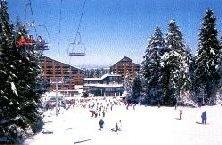 Borovets was developed into a modern ski resort of high class with luxury hotels, restaurants, discos, shops and of course an excellent network of ski runs and lifts along the slopes of the mountain. Borovets is a resort of Alpine type and provides excellent opportunities for a whole range of winter sports-Alpine sports, cross-country skiing, ski jumps and biathlon. The resorts has twice hosted World Cup Alpine skiing rounds. Its biathlon track is one of the best in the world.
The slopes of Borovets have a permanent snow cover from November to May, more than 1.5 m thick. The air in Borovets is crystal - clear and free of any pollutants. The average temperature during the coldest month January is - 4.6 ° C.
PAMPOROVO
Pamporovo is a modern ski resort in the heart of the Rodopa mountain, the mountain of the mythical singer Orpheus. It is the southernmost skiing resort in Europe. It is the sunniest Bulgarian winter resort with wonderful snow throughout the whole season. Pamporovo is situated on 1650 m above the sea level at the foot of peak Snejanka (1926 m). It is 260 km far from Sofia and 85 km from Plovdiv.
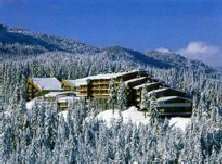 Pamporovo has an exclusive climate featuring a soft winter with about 120 sunny days during the skiing period. The significant influence of The Aegean Sea appears here and the skiing season starts from mid - December to mid - April. The average air temperature is - 3 ° C.
VITOSHA
The resort is situated very close to the capital of Bulgaria. It is situated on The Vitosha mountain, at 1800 m above the sea level, on the eastern slopes of Cherni Vrah (2290 m) which is the highest Vitosha's peak. This is Bulgaria's highest ski resort, only 22 km far from Sofia.
Skiing conditions in Vitosha are excellent, with an extensive network of ski runs and lifts. Four new high-class hotels are situated in a compact group and offer comfort and entertainment to the tourists. The hotels are located near the natural ski slopes and runs and the lifts. There many small hotels and chalets in Vitosha too. Lots restaurants, bars, and night-clubs, a tavern, a ski bar and tea shops are also available. Ski rents are available near the runs.
BANSKO
The resort is situated very close to the capital of Bulgaria. It is situated on The Vitosha mountain, at 1800 m above the sea level, on the eastern slopes of Cherni Vrah (2290 m) which is the highest Vitosha's peak. This is Bulgaria's highest ski resort, only 22 km far from Sofia.
Skiing conditions in Vitosha are excellent, with an extensive network of ski runs and lifts. Four new high-class hotels are situated in a compact group and offer comfort and entertainment to the tourists. The hotels are located near the natural ski slopes and runs and the lifts. There many small hotels and chalets in Vitosha too. Lots restaurants, bars, and night-clubs, a tavern, a ski bar and tea shops are also available. Ski rents are available near the runs.
Whether you're young or not so young, amateur or professional, the pull of Bulgaria's mountains and surrounding areas is irresistible. Whether you seek adventure or leisure, Bulgaria, in all its facets, beckons.
|
|
|
 Location: South-eastern Europe, bordering the Black Sea, between Romania and Turkey
Area: 110,910 sq. km
Neighbouring countries: Greece 494 km, The Former Yugoslav Republic of Macedonia 148 km, Romania 608 km, Serbia and Montenegro 318 km (all with Serbia), Turkey 240 km
Coastline: 354 km
Climate: The climate in Northern Bulgaria is moderate continental, while the climate in Southern Bulgaria is intermediate continental close to Mediterranean. The climate in the regions with altitude of 1900-2000 m above sea level is mountainous and along the Black Sea coast it is maritime. The climate of the seaside regions is milder in the winter and cooler in the summer than the climate of the interior of the country. The average annual temperature is 10,50°C, in winter about 0°C.
Elevation extremes:
Lowest point: Black Sea 0 m,
highest point: Mousala 2,925 m
Population: 7,796,694 (July 2000 est.)
Ethnic groups: Bulgarian 85.3%, Turk 8.5%, Gypsy 2.6%, Macedonian 2.5%, Armenian 0.3%, Russian 0.2%, other 0.6%
Religions: Bulgarian Orthodox 85%, Muslim 13%, Jewish 0.8%, Roman Catholic 0.5%, Uniate Catholic 0.2%, Protestant, Gregorian-Armenian, and other 0.5%
Languages: Bulgarian, secondary languages closely correspond to ethnic breakdown
Getting to Bulgaria: Balkan Airways and a number of other Bulgarian and foreign airlines serve Bulgaria's four international airports from most capital cities in Europe, Russia, Africa, the Middle East, and North America.
The main Trans-European and Trans-continental trains run through Bulgaria. Sofia is directly connected with Paris, Vienna, Munich, Berlin.
You cross a number of countries. Up to Vienna there are no customs and visa formalities. It is more different crossing the countries of former
Yugoslavia; it is recommended to use the route
Vienna - Budapest - Belgrade - Sofia. The roads are first class, most of them highways. The distance
from Vienna to Sofia is about 1,500km. National drivers' licenses are valid in Bulgaria. Insurance has to be made in advance or paid at the border. Cars (self-drive
and chauffeur driven) may be rented at the border checkpoints and in all tourist offices throughout the country. Speed limit:
50 km/h in populated areas
90 km/h outside populated areas
120 km/h on highways.
There are sea and river connections via the Black sea and Danube. The majority are tourist cruises rather than regular boat links.
Passports and visas: A visa is no longer required for visitors from the EU and EFTA member states. Other nationals are advised to check with the Bulgarian embassy in their country. Tourists on a package holiday or in an organised group booked through a recognised travel agent or tour operator do not require visa.
Customs regulations: Standard custom regulations apply for personal effects needed during a holiday. It is prohibited to take out of the country works of art and other objects of historic, artistic and scientific value.
Time: GMT + 2 hours, CET + 1 hour. Clocks in Bulgaria are advanced one hour between April and the end of September.
Currency: The Bulgarian national monetary unit is the LEV. Coins of 1, 2, 5, 10, 50 stotinki and banknotes of 1, 2, 5, 10, 20, 50 leva are in use. The exchange of currency is unrestricted and there is no compulsory exchange. Upon departure from the country any unused Bulgarian currency may be changed back into the respective foreign currency.
Credit cards: Major international cards can be used in the larger hotels, car hire offices, some restaurants and some shops.
Working hours: Offices - 09.00-17.30 Monday-Friday, Banks - 09.00-16.00 Monday-Friday, Shops - 10.00-20.00 Monday-Friday and half day Saturday.
Electricity: 220 Volts. An adapter and/or a transformer may be required.
Official holidays1 January - New Years Day, 3 March - National Liberation Day, Easter (normally a week later than in Western Europe), 1 May - Labour Day, 24 may - National Day of Slavonic Culture and Script, 25 December - Christmas Day
Where to stay Bulgaria has a range of hotels from luxurious five star international hotels to the more modest but comfortable small new private hotels spread all around the country.
In addition there is a wide range of self-catering chalets and villas suited for holidays in the resorts and mountain areas as well as budget private Bed & Breakfast accommodation.
Festivals, rites and celebrations:
Bulgaria has three main festivals, two annual ones and one, the Great Koprivshtitza Folklore Festival that is held every five years.
The Great Koprivshtitza Folklore Festival is Bulgaria's largest gathering of traditional musicians and singers and is a cross between a pop festival
and a medieval fair. It is a sight that knows no equal: thousands of musicians and singers making the hillside above the picturesque village of Koprivshtitza their home for a few days. Coupled with this you have the colourful stalls of the traders and the thousands of visitors who come for the festival.
This is Bulgarian music as it was always played, played by the ancestors of those who first played it. But perhaps it is what happens on the periphery
that is the most authentic. Strolling players or soloists, simply playing for the sheer enjoyment. forming new bonds with other musicians or just letting
their music ring out over the hillside.
The Bourgas International Folk Festival, held annually, attracts a host of Bulgarian and international artists and is held in
the second half of August.
The Kazanluk Festival of the Roses is held annually in early June, and has grown from a local to an international event. Not only are the roses, Kazanluk's
main industry, in full flower. but the town itself blossoms while visitors enjoy the "Rose Picnic" and all the fun of a folklore festival, with its costumes, songs
and dance. Should you still have the energy left, you can always visit the old factories where the rose oil is extracted.
Like western countries. the Bulgarian calendar is dotted with important feast days and festivals. The festival of the Kukeri re-enacts ancient surovaki rites to ward off evil spirits and Kukeri fertility rites. Although only held once every five years, it brings together dancers from all over Bulgaria in a rainbow of colours and styles.
In the agricultural calendar, St. Trifon's Day celebrates the pruning of the vines, and is held on February 14. On the first Sunday before Lent, Kukerov Den celebrates the start of the agricultural year, and all over Bulgaria you can witness processions led by the dancing. leaping Kukeri dressed in colourful masks and costumes.
Baba Marta is celebrated on March 1 when peasant house-holds brush out the winter cobwebs with a traditional spring clean. and people offer each other tokens of good luck called martenitsas.
Lazaruvane is also celebrated in spring on St. Lazarus Day, and here village girls considered fit for marriage perform ritual songs and dances.
The coming of summer is traditionally celebrated on St. Konstantin and St. Elena Day on May 21, and in some of the remoter villages in the Stranzha hills fire dancing, dancing on heated coals, is still practised in celebration of summer's arrival. Ethnologists have suggested that this practice is directly descended from Dionysina rites of the ancient Thracian
Images from Bulgaria
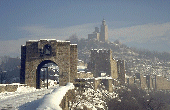 Veliko Turnovo
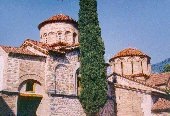 Bachkovo Monastery
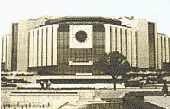 National Palace of Culture
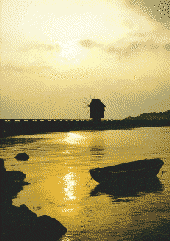 Nessebur
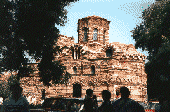 Nessebur
 Alexander Nevski Cathedral
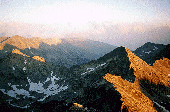 Pirin Mountain
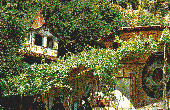 Preobrazhenski Monastery
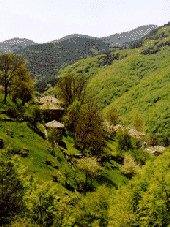 Rhodope Mountains
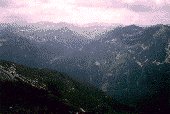 Rila Mountain
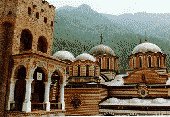 Rila Monastery
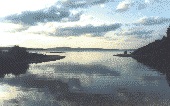 River Kamchiya
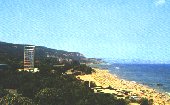 Golden Sands
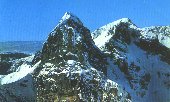 Rila Mountain
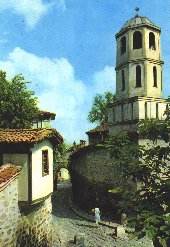 Plovdiv - the Old Town
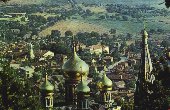 Shipka
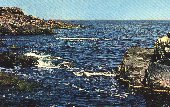 Near Ahtopol
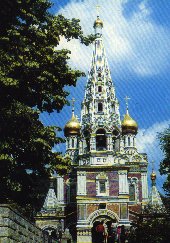 Shipka
 The Smolyan Lakes
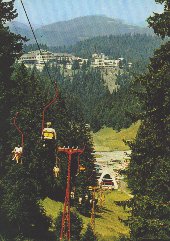 Pamporovo
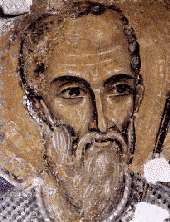 The Boyana Church
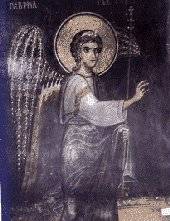 The Boyana Church
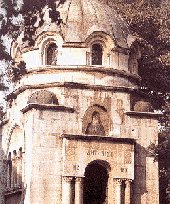 Vidin
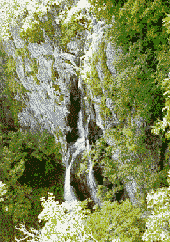 The Boyana Falls
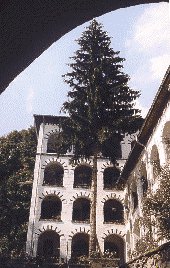 Dragalevski Monastery
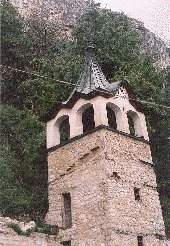 Dryanovo Monastery
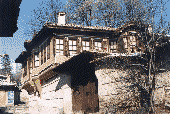 Koprivshtitza
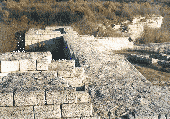 The Madara Fortress
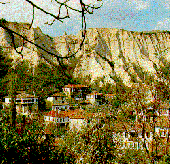 Melnik
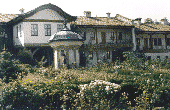 Sokolski Monastery
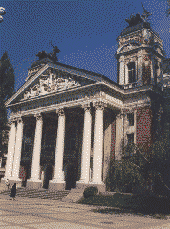 National Theatre-Sofia
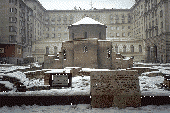 St. George's Church-Sofia
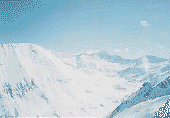 Todorka in Pirin
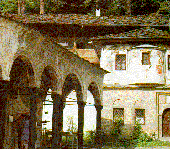 Troyan Monastery
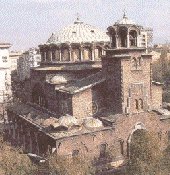 St. Nedelya Church-Sofia
 Sunny Beach
 Golden Sands Resort
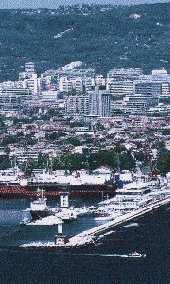 Varna
Activity Hoildays
Mountaineering
and rock climbing
It is difficult to surpass the excitement of climbing in Bulgaria, and the keen moun-taineer will never forget the thrill of the many ascents the mountains have to offer. Besides the chance to follow mountaineering courses, trips are organised by specialised agencies in the areas of Vratsa, Veliko Turnovo, Trojan Maliovitza and Roussenski Lom. For sheer excitement and endurance, the climbing rocks of Rila, Pirin, the Rhodopes and Stara Planina are a must.
Hiking and walking
Hiking and walking have long been a tradition in Bulgaria, and there are both one and two week trips on offer in most of the national parks, always in the company of an experienced guide. Enthusiasts will certainly want to discover the mountain regions of Pirin, Rhodopes, the Balkan with the Botev peak, and Vitosha with the breathtaking Cherni Vrah.
Thanks to a network of comfortable mountain chalets guest houses and camps, the visitor has the choice of more than 5,000 marked paths and routes through unspoiled nature, secure in the knowledge of a warm welcome at the end of an exciting day.
Caving
With more than 2,000 caves still to be explored, Bulgaria's subterranean rock formations and ancient cave paintings will delight and excite the more adventurous visitor. There are organised expeditions in the Balkan, Pirin and Rhodope Mountains and in Sevlievo and Vratsa.
Orienteering
Bulgaria has already hosted two World Championships and the annual cup for orienteering is held on the Shoumensko Plateau. The forests around the Sts. Constantin and Helena resorts and the Kamchiya River are ideal for this type of activity holiday.
Trekking
One or two week trekking trips through Bulgaria have become very popular since they are an ideal way to get to the heart of Bulgarian life and customs, offering a wonderful insight into the local population, who always have a warm welcome for the unexpected visitor. On foot or by horse-drawn carriage, it's an experience not to be missed.
Horse riding
For an experienced horseman, there is a wide
choice of one and two week trekking tours. Destinations include the Balkan Mountains, Trojan, the Danube valley and the Valley of Roses. Riding along the paths in The Rila and Stara Planina Mountains you are at one with nature, breathing in cool mountain air and history at the same time.
Rafting, canoeing and kayaking
Where would an activity holiday be without the excitement of going rafting? The Struma, Arda and Ossam rivers are especially suitable for the enthusiast in springtime once the mountain snows higher up have melted, and the Stackevska river in the Vratza mountain offers all the thrills and spills of wild water rafting. The river Danube is excellent for canoeing and kayaking.
Mountain biking and cycling
Mountain biking in the Rhodope Mountains is a new activity holiday, and the Special Bike Tours are fast
gaining in popularity, both for youngsters and families. The Black Sea coast is great for the cyclist who wishes both to be closer to nature and cycle through the surrounding areas meeting the local inhabitants, and no two days are ever the same.
Fishing
There is excellent trout fishing, along with pike, carp and bream, to name but a few in the mountain streams, and com-fortable accommodation to be had with the local inhabitants. Who will ever forget being among friends, with the smell of the day's catch cooking over the camp fire, sitting around and listening to the 'one that got away' stories which last well into the night.
Hunting
Hunting is more than a tradtion in Bulgaria.
In order to maintain a steady ecological balance, both small and big game hunting is permitted in the mountains, and the larger hunting areas offer
accommodation in typical hunting lodges.
The season runs from mid-August to the end of January, peaking in October, and wild boar and deer are plentiful. The hunter will not be disappointed with his trophies. Licenses both for fishing and hunting are naturally required and can be obtained from the State Forest Authority.
Special interest travels
For the less active visitor there is the chance to explore and discover the local geology and botany either on foot or on horseback. Some areas are so unspoiled that finding semi-precious stones answering to magical names such as amethyst, jasper, agate and chalcedony is not uncommon.
International Youth centres
There are two major international youth centres offering a wide range of activities, both cultural as well as sports oriented. Primorsko, at the foot of the Strandja Mountains on the Black Sea coast, offers a wide range of sporting activities in natural surroundings. When night falls, there's the chance to take part in traditional dancing and singing or visit one of the local taverns or night-clubs.
Batak, in the Rhodope Mountains, located at the pic-turesque area of Tsigov Chark near the lake of Batak, is a firm
favourite for skiers in winter-time, and during the summer there's fishing, hunting, caving, mountaineering, hiking and walking.
|